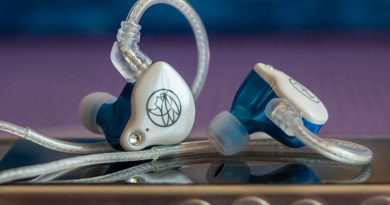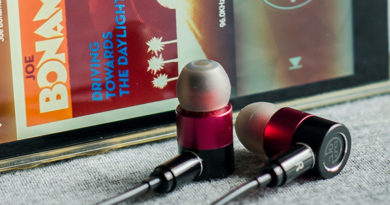Anew U1 — single dynamic driver at its best

One of the best thing about modern HiFi market is that new companies and new brands are appearing quite often. At first, there are nothing but doubts whether the new player is worthy to try, but on the other hand — such tendency would push the market further. Moreover, new brands are likely to put more efforts into their initial product in order to bite some market share right from the start.
There is not much of the information about Anew brand. We were not able to find their official website or any additional information about their current product on sales except for the rumorses posted on a dedicated HeadFi thread
«So I did some digging and this apparently is not their first model they produced, and it comes from a former lead sound engineer from LZ» — by yearzero user on HeadFi.
Input from Emelya on HeadFi (Thanx, man):
«As far as I understand ANEW brand appeared in 2017 and now offers 3 models of earphones: U1 (TSH-AF518 in Japan), 1 nano-tube driver; C1 Classic (Lucky 7 Original), 2BA+DD; M1 (Maru 7) 4BA+DD. Manufacturer is Dongguan Shengyan Electroacoustic Technology from Mainland China (has its own site and contacts). According to this review ANEW earphones designed in cooperation with Japanese team (LZ branch?) and distributed mostly in Japan and Taiwan.»
Even its box doesn’t shed more light — it only states the company name behind the brand — Rui Sheng Audio Technology Ltd. So, either the company has just decided to go with sales overseas and would develop their media presence soon, or this is totaly Asia-oriented brand with some sales through international shop like PenonAudio.

Anyway, today we would try to answer the question whether their new product Anew U1 is worth of our attention…
You can purchase Anew U1 at PenonAudio store
Anew U1 technical specifications:
- Driver: 10mm dynamic driver with carbon-nanotube diaphragm
- Sensitivity: 108db
- Impedance: 32ohm
- Frequency response range: 20-20KHz
- Total harmonic distorsion: < 0.2%
- Cable: 1.2m, silver-plated copper cable, 4 shares braided
- Cable connectors: MMCX
- Plug: 3.5mm gold-plated, TRS
Carbon-nanotube diaphragm…, mmmmm — sounds intriguing… Hope that this would do any good to the resulting sound quality. We’d investigate on that a bit later.
Packaging and box contents:
Pretty neat packaging. We like the white box color with minimalistic approach: only brand logo imprint and company name. Nothing else.

The rest of the infromation is provided on pretty large user manual included in the package. Apart of that, the box includes:
- Anew U1 IEMs
- cable
- 7 pairs of silicon eartips
- 3.5mm plug protector
- cable velcro strap

No special revelations here. Unfortunately, there is no storage & carrying bag or case.
Materials, design and feel:
Not really sure about the materials used but Anew U1 IEMs look very attractive. It is pure white with glossy finish and red brand logo under thin layer of lacquer at the top.

Looks like the shells are unibody which makes them very stiff and eliminates any kinds of part friction noises in future. Output nozzles are made of aluminum covered with non-detachable filter grills. There are additional phase inverter openings on the sides also covered with aluminum grills. They are outlined with red and blue which are used as right and left indicators. In overall — very attractive design and unusual color choice.

Cable plays a huge role in making a good impression about Anew U1 IEMs. Both — design and sound quality wise. It is silver-plated copper in transparent braid, twisted, with gold-plated 3.5mm audio jack| MMCX connectors and aluminum plug|connector housing. It also incorporates such elements as: earhooks, red and blue side indicators, aluminum Y-splitter with brand logo and bend protection.
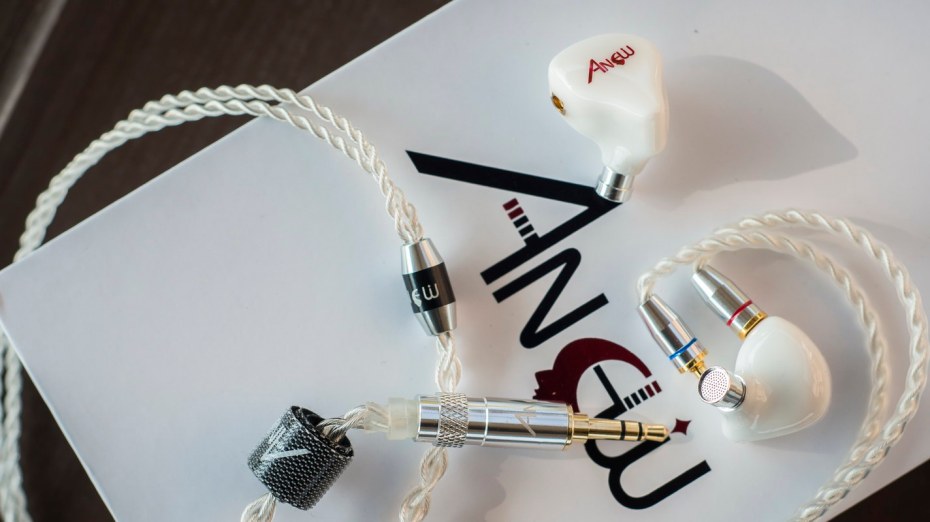
Moreover, one rare but important detail here — cable plug and MMCX connector housings can be disassembled — parts are threaded. Therefore, we can even think of fixing the cable if something went really wrong.
Anew U1 fit is not perfect but more or less comfortable. It is really subjective and not this much universal as we’ve seen in Kinera IEMs, for example. The right choice of eartips plays very important role here while trying to get the best fit and outer noise isolation. Thanks God, MMCX connectors allow IEMs to turn around the center point and we wouldn’t have to heat up earguides in order to give it the appropriate initial direction and angle. The good news are that there are no extra sounds produced by the construcition or separate parts and noise isolation is very good. No discomfort during long listening sessions… shape and weight are pretty good.
Sound quality:
Our testing equipment: Hidizs AP80 DAP, Hidizs AP200 DAP, Hidizs Sonata DH1000 DAC&.

First of all — about carbon-nanotube diaphragm. We see lots of companies experimenting with modern materials while trying to build a potentially better dynamic driver. This fight goes on not only among the manufacturers of IEMs but also on such markets as studio|home HiFi|HiEND audio. All of those companies are trying to acquire the best material in terms of frequency response range, reaction speed, weight and driving load… Not sure what did Anew mean by carbon-nanotube (carbon fiber?) but hope that the advantages of the sound quality of those particular dynamic IEMs originate from the use of such material.

Another thing is the burn-in process which is described in the user manual. Anew talks about 100-200 hours of mid-level volume pink noise in order to disclose the full potential. We’ve done the required but were not able to spot the difference. Either we are getting old or, perhaps, only the precise measurement equipment would be able to register such, if any…
Bass and lows:
Excellent. One of the best IEMs among all that we’ve tested so far. Deep bass presence is at the sweet spot — not distructing other frequiencies, with very good shape and amount. The best characteristics of it — the resolution. U1 IEMs are capable not only of delivering bass at appropriate level but also of reproducing its details and texture. We rarely see such careful tuning of bass section nowadays.
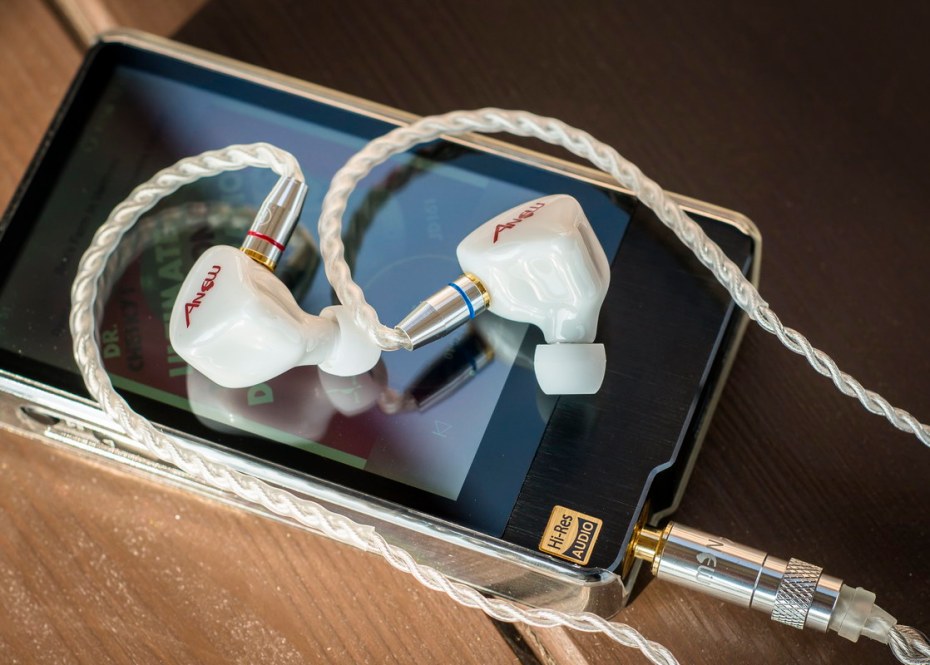
Midbass is nothing to complain either. Full-bodied, powerfull, fast. Articulation and speed are very good. Drum sections sound precisely and very engaging. Such IEMs are definitely a good choise for any kind of genres with lots of drums and bass. We think that Anew U1 large compensation openings and driver cavities are perfectly calculated resulting into such pleasing lower registers reproduction.
In overall bass doesn’t lead the entire scene, it is served delicately and just to the point it should be. Its texturing would satisfy the most demanding audience.
Mids and vocals:
Again — everything is good here. This section doesn’t get too much of attention, neither it is laid back. Very good balance with other frequency ranges and no obvious coloration. Older rock songs with tube amplifiers get the proper warm treatment and modern genres don’t suffer either and get shiny and crisp if played so. Joe Bonamassa vintage tube-amplified Gibson or Jean Michel Jarre synthesizer — all get the appropriate treatment. Very universal tuning for any kind of music. Vocals sound clearly and naturally. No problems with excessive lisping. Resolution and amount of details are on very high level concerning the dynamic nature of these IEMs.

Treble:
If you thought that this section would talk about «tar tar in a jar of honey» — you are wrong. Moreover, this is the most impressive part of Anew U1 IEMs — despite using the dynamic driver treble section sound like if we are dealing with balanced armature here. Resolution and amount of details are great but at the same time do not produce extra sibilances or noise. Seems that people in Anew done the impossible — tuned treble so that U1 are able to compete with armature IEMs but didn’t allow any further negative and natural repercussions. Perfect job here!!! And again — treble is in good balance with the rest of frequency ranges. In contrary to many of hybrid IEMs it doesn’t add cool, sparkling or icy colorization to the tonality. Just the proper amount of treble brought to a splendid level of details.

Channel separation and layering:
Layering of instruments is good. There is no feel of promiscuity or overemphasis on certain frequencies that would obscure the details we would search for in our testing material. The only small notice is moderate channel separation resulting into a bit less then usual distance between the instruments in binaural recordings. It doesn’t mean that the disctance is small but some latest IEMs on our tests showed some more instrument distribution on vertical and horizontal planes and were closer to full-sized overheads in this regard. Their multi-driver structure and slight desynchronization helped to acquire better feel of channel separation and layering…
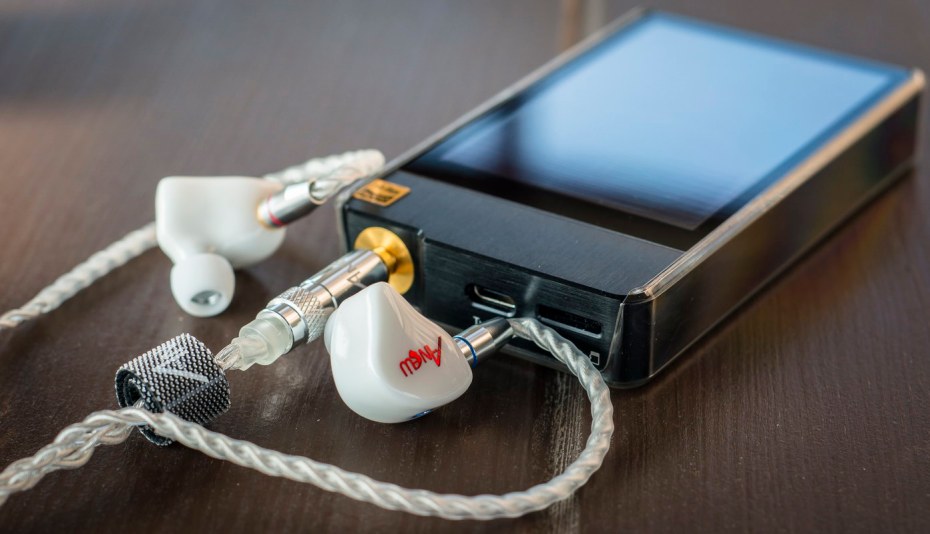
Sound in overall:
Anew U1 could be described as universal IEMs, with balanced gain distribution across AFR resulting with slight tendecy to brighter side due to excellent mids|treble resolution and amount of details. There are no obvious peaks or overemphasis making U1 the right choice for colored audio sources or any kind of music genres. Universal nature and excellent resolution are the main advantages of Anew U1.
The most important and what impressed us the most is the fact that U1 IEMs is balancing on the edge of delicate, intimate, warm sound of dynamic drivers and precise, sharp and detailed delivery of armature rivals. We know people, same as we are, who would stick to dynamic drivers for their advantages but at the same time would regret the lack of treble details and their extent after listening to armature IEMs. Anew U1 would be a perfect choise to end this struggle.
Compared to Magaosi K3HD:

Magaosi K3HD are hybrid IEMs that naturally leads to more sharpness on mids and treble with much brighter tonality. It’s sound is V-shaped with recessed mids. Noise level is much higher due to higher sharpness on treble and lows lacks the amount of presence and details. Anew U1 are superior in terms of AFR balance, thicker mids and warmer tonality. Treble and mids resolution a bit hanging behind but are much more controlled and more pleasing to listen to for a longer period.
Compared to Kinera IDUN:

Kinera IDUN exhibit good AFR balance and much higher amount of details on treble and mids. Moreover, their physical fir is almost perfect. Anew U1 have something as a setoff: warmer and thicker delivery of midsand vocals, more intimacy in sound, better lows and mid bass. And all of that with more than expected level of details.
Compared to Earnine EN1J:

Earnine EN1J are totally focused on the mids and vocals leaving the rest out. Those are very interesting IEMs for musicians and can deliver good and warm sound despite its armature nature. But Anew U1 do exhibit more balanced AFR, better presence of lows and treble. The resolution is equal or even exceeded EN1J tuning approach.
Conclusion:
We get back to what we have started this review with — we should always welcome new brands because they would motivate new spin of competition for every market player. Apart from that, newcomers would often try to bite some market share by introducing their best products at the lowest price point. This is true for Anew — we strongly believe that U1 IEMs are much underestimated in terms of price/sound quality ratio. We can’t think of any other dynamic rival that would come even close to the level of U1. Even hybrid or pure armature IEMs with a slightly higher price and created by the most respected brands would suffer from less balanced AFR. But Anew has gone further with their dynamic driver and managed to come very close to the main technological advantage of armature technology — exceptional resolution and high amount of details. In addition to that, U1 definitely outperforms many IEMs in bass and midbass section.

Our warm greetings to Anew U1 and all the best wishes. We hope that all of their future products would maintain the same approach: delivering great sound quality that is totally exceeding the budget!
You can purchase Anew U1 at PenonAudio store


